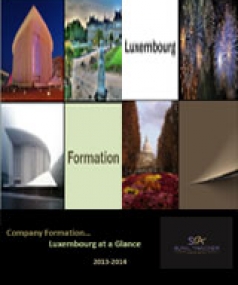Special Purpose Acquisition Company

One or more private individuals/entities can create a Special Purpose Acquisition Company (SPAC) for the special purpose of acquiring interest in one or more existing companies or businesses by raising capital through an initial public offering (IPO), and therefore, receive profit from such a merger, acquisition and/or other business transactions. SPAC’s were first introduced in the 1990s in the United States of America and recently its popularity was increased on a global level. Before identifying a business idea, an IPO is initiated, and consequently, the proceeds from the IPO shall be used to acquire an existing company. For example, ‘A’, ‘B’ and ‘C’ decide to come together to set up a SPAC called ABC. ABC will then hire a team of experts which shall initiate an IPO and raise money through such a public offering to be placed in a trust. The next step for ABC would be to target and identify a business acquisition. If ABC (parent company) decides to acquire XYZ (target company) which is a private company, then the proceeds from the IPO shall be made by ABC to acquire XYZ. Hence, through the set-up of a SPAC, a private company gets access to the public markets while raising capital from the public without incurring any of the expenses associated with the IPO and exposed to gain maximum profit from such a transaction.
Individuals/Entity coming together => Preparation of an IPO => Collecting the proceeds of the IPO and depositing them in a trust => Identifying a business target =>Announcement of the business target =>Voting amongst the shareholders for approval of the business transaction =>Approval of the transaction =>Using the proceeds from the IPO to fulfil the business transaction =>failure of business transaction leads to liquidation and returning of the money in the IPO back to the shareholders
The working of a SPAC involves various steps. Firstly, the managers form a blank check company and buy all the shares. Once the blank check is formed, the managers shall file proper registration forms where all guidelines regarding the entity, managerial characteristics, securities composition, etc. shall be laid down. The date of the IPO shall also be determined in the same prospectus. Underwriters shall use units (a security that consists of a combination of shares and warrants) as a financing security. After the IPO, the proceeds raised will be immediately deposited in a trust account with credible financial institutions. After the IPO, the SPAC shall be listed and will become a public company and the trading of the shares can start henceforth. This helps the private companies to obtain finance and gain access to the financial markets. While the securities are being traded, managers seek proper acquisition targets to merge with and the SPAC shall have a limited amount of time to close such a merger deal due to the listing regulations. The acquisition target shall be announced and a vote amongst the shareholders shall take place to approve or reject such a business proposition. In case the business transaction is not approved, the SPAC shall be liquidated and the money from the trust account shall be returned to the shareholders. Each share will get back a proportionate amount of the IPO proceeds previously deposited. In case of approval of such a business transaction, the SPAC will continue to conduct business. Some of the benefits provided by setting up a SPAC are listed below: -
- The founders of a SPAC incur less expenses as they use the proceeds received from the capital raised through the IPO
- Setting up a SPAC is a fast process and there is usually a time limit till when the business transaction can be conducted
- The proceeds from the IPO are returned on the failure of a business transaction.
- It is less risky as there is a downside protection for the investors until the business transaction concludes
- There is access to public markets as the companies can get publicly listed
- The timing of exit can be controlled in case of liquidity of such a company and there is a possibility of full cash exit at the time of liquidation
 SPACs are listed and welcomed in the U.S. financial markets as well as on the Stock Exchanges in various other countries like Canada, Malaysia, United Kingdom, Canada, Netherlands, New Zealand, South Korea, to name a few of the countries. The Securities Commission Malaysia has enacted a specific regulatory framework dedicated to SPACs in the Equity Guidelines (‘EGs’) in 2009. The guideline for SPAC’s provide that in order to be listed, a SPAC should be incorporated under the Malaysian corporate law. Guidelines provide that regarding the proceeds of the SPAC, 90% of the proceeds received from the IPO should be held in a trust. Only one class of warrants can be issued during the IPO, and those warrants shall be callable only after the business combination has been completed. The proposal of an acquisition is decided by the team hired in the SPAC and is approved if it is consented by a majority of shareholders (at least 75% of the nominal value of the share capital). The Toronto Stock Exchange (TSX) has provided investors with Guidelines (‘Guide to Special Purpose Acquisition Corporations’ adopted in 2014) in Canada for acquiring SPAC’s. Provisions for listing requirements have been laid out in the same. A company set up with the purpose of acquiring through a merger, asset acquisition or any other similar business combination, an unidentified operating business. A prospective target business is identified after the proceeds from the Initial Public Offering are raised and used to achieve such a business transaction. In United States of America, these companies are listed according to the regulations laid out by NYSE, NASDAQ and NYSEMKT LLC).
SPACs are listed and welcomed in the U.S. financial markets as well as on the Stock Exchanges in various other countries like Canada, Malaysia, United Kingdom, Canada, Netherlands, New Zealand, South Korea, to name a few of the countries. The Securities Commission Malaysia has enacted a specific regulatory framework dedicated to SPACs in the Equity Guidelines (‘EGs’) in 2009. The guideline for SPAC’s provide that in order to be listed, a SPAC should be incorporated under the Malaysian corporate law. Guidelines provide that regarding the proceeds of the SPAC, 90% of the proceeds received from the IPO should be held in a trust. Only one class of warrants can be issued during the IPO, and those warrants shall be callable only after the business combination has been completed. The proposal of an acquisition is decided by the team hired in the SPAC and is approved if it is consented by a majority of shareholders (at least 75% of the nominal value of the share capital). The Toronto Stock Exchange (TSX) has provided investors with Guidelines (‘Guide to Special Purpose Acquisition Corporations’ adopted in 2014) in Canada for acquiring SPAC’s. Provisions for listing requirements have been laid out in the same. A company set up with the purpose of acquiring through a merger, asset acquisition or any other similar business combination, an unidentified operating business. A prospective target business is identified after the proceeds from the Initial Public Offering are raised and used to achieve such a business transaction. In United States of America, these companies are listed according to the regulations laid out by NYSE, NASDAQ and NYSEMKT LLC).
It can be safely concluded that the sole purpose of raising the funds in an IPO is done with the intention of using these funds to finance the acquisition of a yet unknown existing company and within a limited time frame. The period shall be specified within which such a merger has to be achieved and the failure to achieve the same shall lead to liquidation of the SPAC. However, there are certain downsides to it as well as the acquisition target needs to be identified and executed in a timely manner and indicate such an agreement with the listing exchanges. Private companies wanting to go public face a risk of the market not being receptive to the offering made. There also lies a possibility that the companies going public through a business combination with a SPAC, the shareholders do not approve of the business transaction (in cases where the shareholder vote is required).
 SPAC is not currently provided under any statute law or code, with the exception of Korea and Malaysia. The Korea Exchange (KRX) which provides for a definition under the Enforcement Decree of the Financial Investment Services and Capital Markets Act (section 6 (4) 14). This defines a SPAC as a corporation, with the sole business objective of merging the corporation with another corporation and issue the stock certificates through a public offering. SPAC’s are listed as public companies under the KOSPI or the KOSDAQ markets in Korea. Under the Equity Guidelines provided by Malaysia, a SPAC is defined as a corporation which has no operations or income generating business at the point of initial public offering and has yet to complete a qualifying acquisition with the proceeds of such offering. No compulsory legal definition of SPAC’s has been defined except in Malaysia and Korea, and in the absence of such a law, the national law provisions shall supplement this.
SPAC is not currently provided under any statute law or code, with the exception of Korea and Malaysia. The Korea Exchange (KRX) which provides for a definition under the Enforcement Decree of the Financial Investment Services and Capital Markets Act (section 6 (4) 14). This defines a SPAC as a corporation, with the sole business objective of merging the corporation with another corporation and issue the stock certificates through a public offering. SPAC’s are listed as public companies under the KOSPI or the KOSDAQ markets in Korea. Under the Equity Guidelines provided by Malaysia, a SPAC is defined as a corporation which has no operations or income generating business at the point of initial public offering and has yet to complete a qualifying acquisition with the proceeds of such offering. No compulsory legal definition of SPAC’s has been defined except in Malaysia and Korea, and in the absence of such a law, the national law provisions shall supplement this.
 English
English
 عربي
عربي Русский
Русский 官话
官话 português
português
 Türk
Türk 










